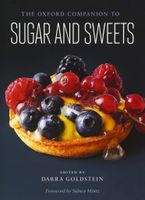🔥 Try our grilling cookbooks and save 25% on ckbk membership with code BBQ25 🔥
Creation of Cocoa
Published 2015
One of the inherent problems with regularly drinking chocolate was the high cocoa butter content of the cacao beans that, when overconsumed, resulted in excessive weight gain and digestion issues. To reduce the cocoa butter content of the chocolate drink, various processes were developed to extract and separate the cocoa butter from the cacao solids. Cocoa butter was a by-product of these processes and found utility elsewhere as a fat in other foods or in cosmetics. Coenraad van Houten, an early-nineteenth-century chocolate maker from Amsterdam, developed an industrial-scale cocoa press to extract butter from the chocolate liquor. See van houten, coenraad johannes. It took many years for the butter press to become a standard process in the chocolate industry. By the 1860s, the Englishman George Cadbury, searching for a way to differentiate his chocolate from the competition, added cocoa presses from van Houten. See cadbury. The resulting product, named Cadbury’s Cocoa Essence, was the first reduced-fat cocoa powder available in England at the time, and it launched the long-term success of the Cadbury business. By the end of the 1800s, the pressing process was commonplace throughout the industry.
Become a Premium Member to access this page
Unlimited, ad-free access to hundreds of the world’s best cookbooks
Over 160,000 recipes with thousands more added every month
Recommended by leading chefs and food writers
Powerful search filters to match your tastes
Create collections and add reviews or private notes to any recipe
Swipe to browse each cookbook from cover-to-cover
Manage your subscription via the My Membership page
Part of
Advertisement
Related Recipes
-
-
-
-
Related Reference
-
-
-
-
Advertisement



